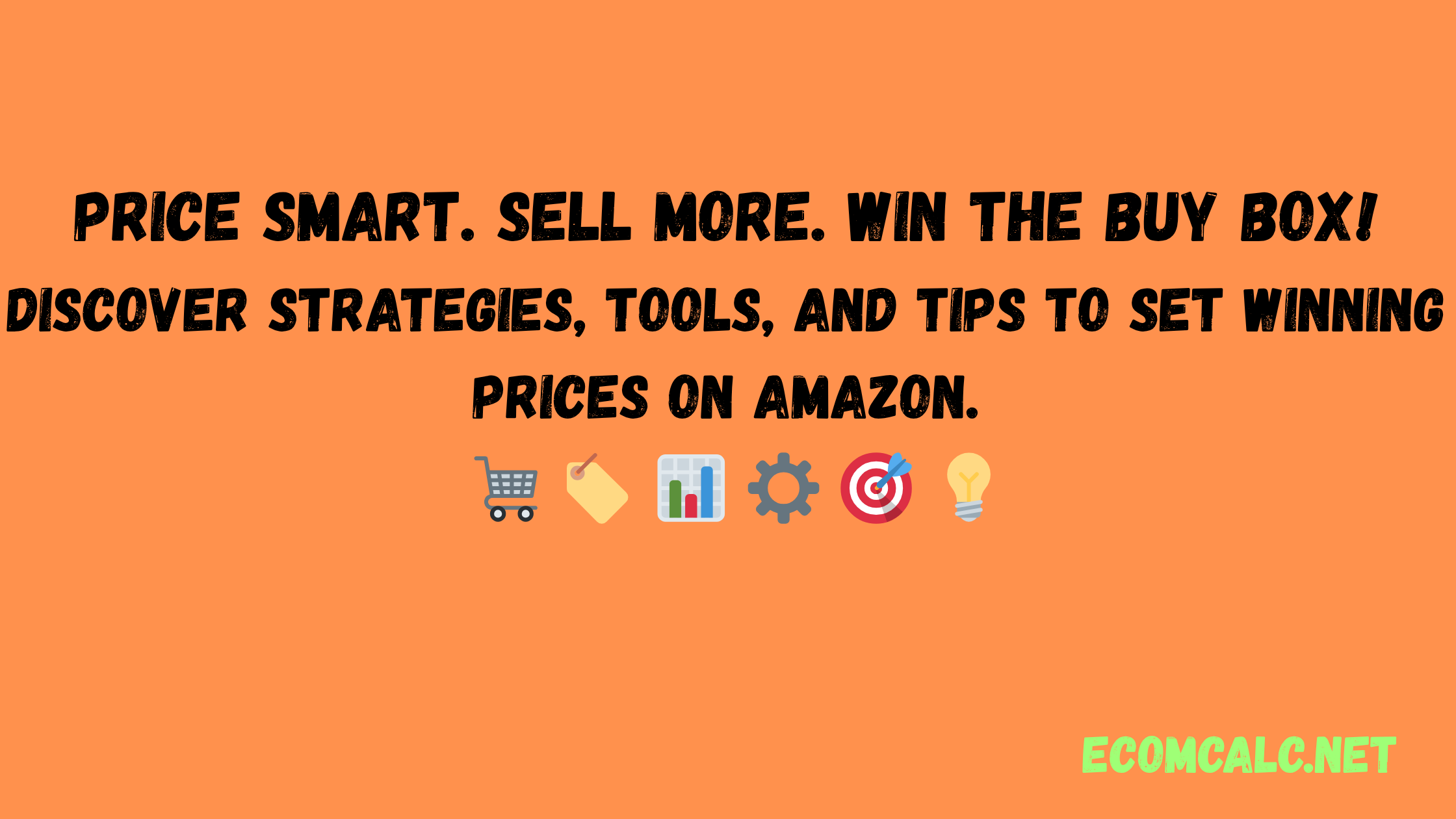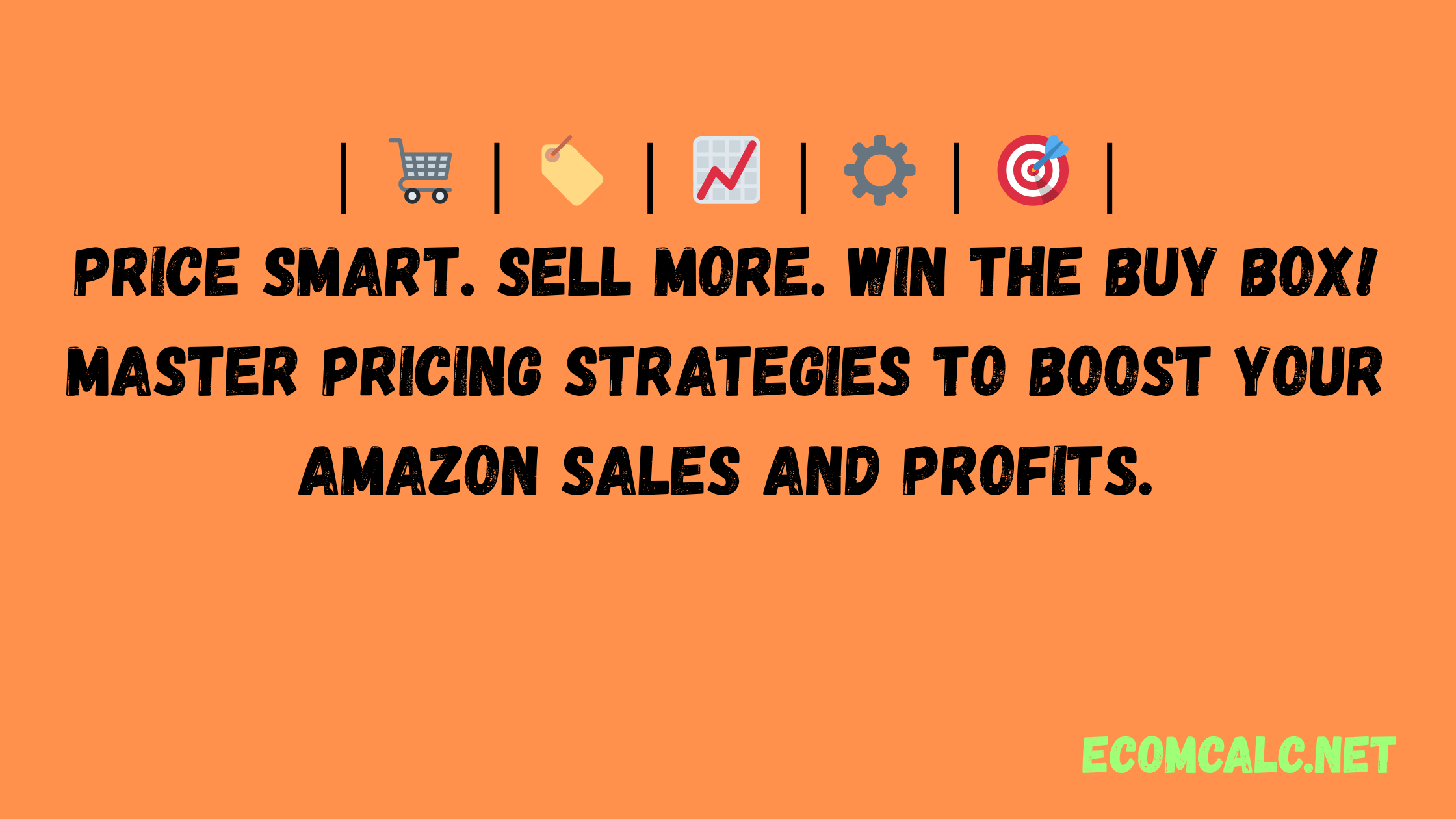How to Price Your Products Competitively on Amazon
When you sell on Amazon, pricing your products isn’t just about setting a number. It’s a strategic dance that can make or break your sales, impact your profits, and determine whether you win that coveted Buy Box. This comprehensive guide will walk you through everything you need to know to price your products competitively on Amazon—helping you increase sales, stay profitable, and build a sustainable ecommerce business.

Why Pricing Matters on Amazon
Amazon is a hyper-competitive marketplace where millions of sellers offer millions of products. Buyers here are savvy; they compare prices, read reviews, and expect quick delivery. Among all factors, price is often the biggest influencer of buying decisions.
But pricing isn’t just about being the cheapest. Amazon’s algorithms use pricing as a key factor when deciding who gets the Buy Box—the small “Add to Cart” button that generates the majority of sales on the platform. Winning the Buy Box can multiply your sales overnight, while missing out can mean stagnating inventory.
Thus, understanding how to price competitively on Amazon is vital to your success.
1. Understand Amazon’s Pricing Algorithm
Before you set any price, it’s crucial to understand how Amazon decides which seller wins the Buy Box. The Buy Box algorithm looks at many factors, but pricing is the most heavily weighted.
Here’s the breakdown:
- Price (including shipping): 70%
Amazon favors sellers offering the best total price to the customer. This includes the product price plus shipping costs, so a “free shipping” offer can be very competitive. - Fulfillment method: 20%
Fulfillment by Amazon (FBA) sellers usually get a leg up, as Amazon trusts their fulfillment network to provide fast and reliable shipping. - Seller performance metrics: 10%
This includes your seller rating, shipping speed, and customer service record.
Understanding this means that competitive pricing combined with excellent fulfillment and seller reputation is your ticket to Buy Box success.
2. Monitor Competitors Religiously
Amazon is dynamic—competitors change prices daily, sometimes hourly. To stay competitive, you must keep an eye on what others are charging for the same or similar products.
Tools to Help You Track Prices:
- Keepa: Tracks price history for products, showing fluctuations and trends.
- CamelCamelCamel: Another popular price tracker with alerts for price drops.
- Sellerboard and Repricer Tools: Provide insights and automated alerts when competitors adjust their prices.
By using these tools, you can understand when to adjust your prices up or down and spot patterns such as seasonal dips or spikes in demand.

3. Use Dynamic Repricing Strategies
Setting a fixed price can put you at a disadvantage in Amazon’s fast-moving marketplace. Instead, dynamic repricing—automatically adjusting your prices based on preset rules—can keep you competitive while protecting your margins.
How Dynamic Repricing Works:
- You define rules such as:
- Never price below X% profit margin.
- Undercut competitor prices by $0.01.
- Raise prices if inventory is low.
- The software monitors competitor prices and market conditions.
- It adjusts your prices automatically based on your rules.
Popular Repricing Software:
- RepricerExpress
- Informed.co
- Bqool
Dynamic repricing helps you stay competitive without constant manual updates and avoids price wars that erode profitability.
4. Leverage Psychological Pricing Tactics
Numbers matter, but how you present them matters even more.
Why Psychological Pricing?
Many shoppers respond better to prices that look like deals. For example, prices ending in .97 or .99 often feel cheaper than round numbers.
Example:
$19.97 tends to outperform $20.00
$9.99 feels like a bargain compared to $10.00
These small differences can trigger positive buying impulses and improve conversion rates.
Use “Charm Pricing” Strategically:
- For most products, prices ending in .97 or .99 work well.
- For luxury or premium products, round numbers or even whole numbers may signal quality and exclusivity.
5. When Should You Compete on Price — And When Not To?
Price wars can be tempting but often lead to shrinking margins and hurt long-term business sustainability.
Compete on Price When:
- You sell commodity products with many sellers and little differentiation.
- The product is high turnover with thin margins.
- Your goal is to clear inventory quickly.
Avoid Competing Solely on Price When:
- Your product has unique features or bundled offers.
- You provide superior customer service, warranty, or faster shipping.
- Your brand has strong recognition or loyal customers.
In these cases, focus on communicating value rather than dropping prices. Customers often pay a little extra for reliability, convenience, or uniqueness.

6. Calculate Your True Costs and Margins
Never set your prices blindly. Use Amazon’s FBA calculator or a similar tool to factor in all costs:
- Product cost
- Amazon referral fees (usually 15%)
- FBA fulfillment fees
- Shipping to Amazon warehouse
- Packaging and labeling costs
- Advertising and marketing expenses
Once you know your total cost per sale, add a margin that keeps your business profitable while remaining competitive.
7. Consider Offering Bundles and Multipacks
Pricing isn’t just about the unit cost; it’s about perceived value.
If your competitors sell a single product, consider bundling related items or offering multipacks at a discounted price per unit. This can:
- Differentiate your listing
- Increase your average order value
- Help justify slightly higher prices
Shoppers love deals that save them money in the long run, and bundles make it harder for competitors to match your offer directly.
8. Utilize Promotions and Coupons Strategically
Amazon provides promotional tools that can help you attract buyers without permanently lowering your prices.
- Coupons: Small discounts that show up prominently in search results.
- Lightning Deals: Time-limited flash sales that boost visibility.
- Subscribe & Save: Encourages repeat purchases at a discount.
These tools can temporarily reduce your price, drive volume, and improve your sales velocity — all without harming your baseline price or margins.
9. Use Price Testing and Data Analysis
Pricing is not static. Experimentation can help you find the sweet spot where your product sells best at the highest profit.
Steps for Effective Price Testing:
- Pick a baseline price based on competitor research.
- Test a small price increase or decrease for a week or two.
- Monitor sales volume, Buy Box percentage, and profit margins.
- Analyze which price point yields the best overall return.
Use Amazon’s business reports or third-party analytics software for accurate data.
10. Avoid Common Pricing Mistakes on Amazon
- Don’t underprice just to win the Buy Box: This can lead to losses.
- Avoid price gouging: Amazon penalizes extreme price hikes.
- Don’t ignore fulfillment costs: Shipping can erode thin margins.
- Don’t forget about seasonal pricing: Adjust prices during holidays or sales events.
Bonus Tips for Competitive Amazon Pricing
- Use FBA to boost your Buy Box eligibility. Amazon prefers sellers who use their fulfillment service.
- Maintain good seller metrics: Fast shipping, low defect rates, and positive reviews improve your chances.
- Keep an eye on Amazon’s fees: They change periodically and affect your net margins.
- Consider currency fluctuations if you source products internationally.
Summary
Pricing on Amazon is a multi-dimensional strategy involving competitor tracking, algorithm understanding, cost calculation, and continuous optimization.
To price your products competitively:
- Understand Amazon’s pricing and Buy Box factors.
- Monitor competitors constantly with the right tools.
- Use dynamic repricing software to automate price adjustments.
- Apply psychological pricing tactics.
- Choose when to compete on price vs. value.
- Calculate your costs thoroughly to maintain healthy margins.
- Offer bundles to increase perceived value.
- Use Amazon’s promotional tools strategically.
- Test prices and analyze data regularly.
- Avoid pricing mistakes that can hurt your business.
By mastering these steps, you’ll improve your chances of winning the Buy Box, increasing sales, and growing a profitable Amazon business.